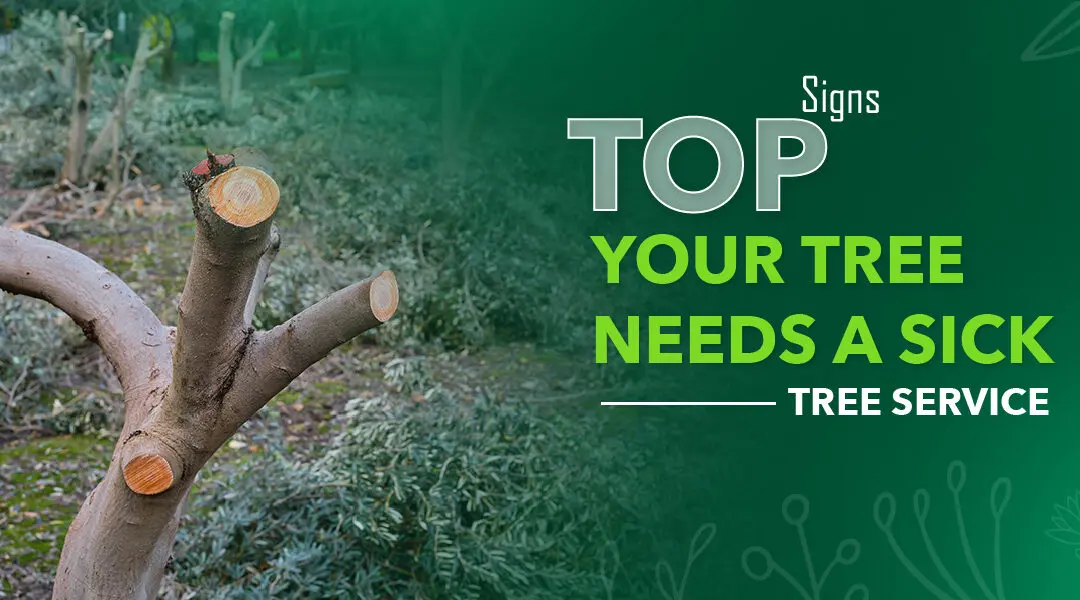
If you’re a homeowner with a tree that looks out of sorts, it could be because it is sick. Yes, trees do get sick, and thankfully, it is treatable. Branch Management Tree Service can diagnose and treat all types of trees. With hundreds of successful tree recoveries in Scottsdale, AZ, we have one of the highest success rates!
Sometimes, it can be hard to identify when a tree is sick. Here are a few tips on how you can tell if there is something wrong with your favorite tree.
1. Falling or Discolored Leaves
The first and most common giveaway that your tree could be suffering from sickness is the unusual timing of leaves dropping. While it is true that tree leaves drop during specific seasons, sick trees drop leaves out of season. There could also be peculiar patterns of the leaves that can also be an indicator of tree health. Leaves that dry, discolored, and wilting are all signs of ill health.
2. Visible Signs of Decay
Like leaves, the physical appearance of the tree is also an easy way to gauge tree health. Areas of the tree that have soft, spongy wood or fungal growth are not good signs. These can be the beginning of more serious conditions that follow. In some cases, there could also be a strong odor emanating from the tree, which is caused by rotting wood.
3. Abnormal Bark Growth
Another indicator of tree sickness is bark growth issues. There are a number of ways abnormal bark growth can manifest on a tree including peeling, flaking, swelling, or bulging in several places simultaneously. This could be accompanied by cracks or fissures on the tree from which tree sap oozes out. Discolored or rotting bark is the beginning sign that something is wrong with the tree.

4. Dead or Dried Branches
Tree branches falling is one of the signs of a sick tree. When there isn’t enough nutrients being pushed outward to the tree branches, they tend to shrivel up and die. This results in branches that become brittle and dry which causes it to break off the tree. For bigger trees, this is a serious issue as they tend to have larger branches that can cause damage to people and structures.
5. Inconsistent or Weird Growth
If a tree is leaning to one side or showing inconsistent canopy growth, then it might be because it is not healthy. This is also exhibited when the tree branch grows twisted or even gnarled without outside factors. These can be dangerous in the long term as trees leaning to one side have been known to fall.
6. Serious Root Issues
Another sign of sick trees is that the root becomes uprooted or exposed. In serious cases, this can cause the tree to lean to one side and eventually collapse on the ground. Another cause for this is due to rampant soil erosion or unusually high rainfall. Getting in touch with a licensed arborist can help you identify the reason for this as well as the solution.
7. Trunk Splits or Cracks
Trunk splits are a more serious version of the bark splits that we’ve touched on earlier. It is characterized by vertical splits along the trunk which quickly turn into gaping holes if left untreated. This type of issue occurs due to many factors and the tree being sick is just one of them. This can accumulate moisture causing fungal growth causing the wood to rot and smell.
8. Increased Pest Activity
When a tree is sick, it loses the ability to defend itself against pests. As a result, a variety of pests make their home inside the tree and start infecting and devouring it from the inside out. They can be identified visually by peculiar holes that appear on the bark of the tree. In some cases, you can even find larvae inside the tree which means you need to call the specialists as soon as possible.
It can be heartbreaking to have a sick tree in your yard. But, if you’re in Scottsdale, AZ – the good news is that we can help your tree recover! We have experts with years of experience in dealing with a variety of diseases at Branch Management Tree Service. Our goal is to ensure that you get your tree back to health in the most effective way possible!
Comments are closed